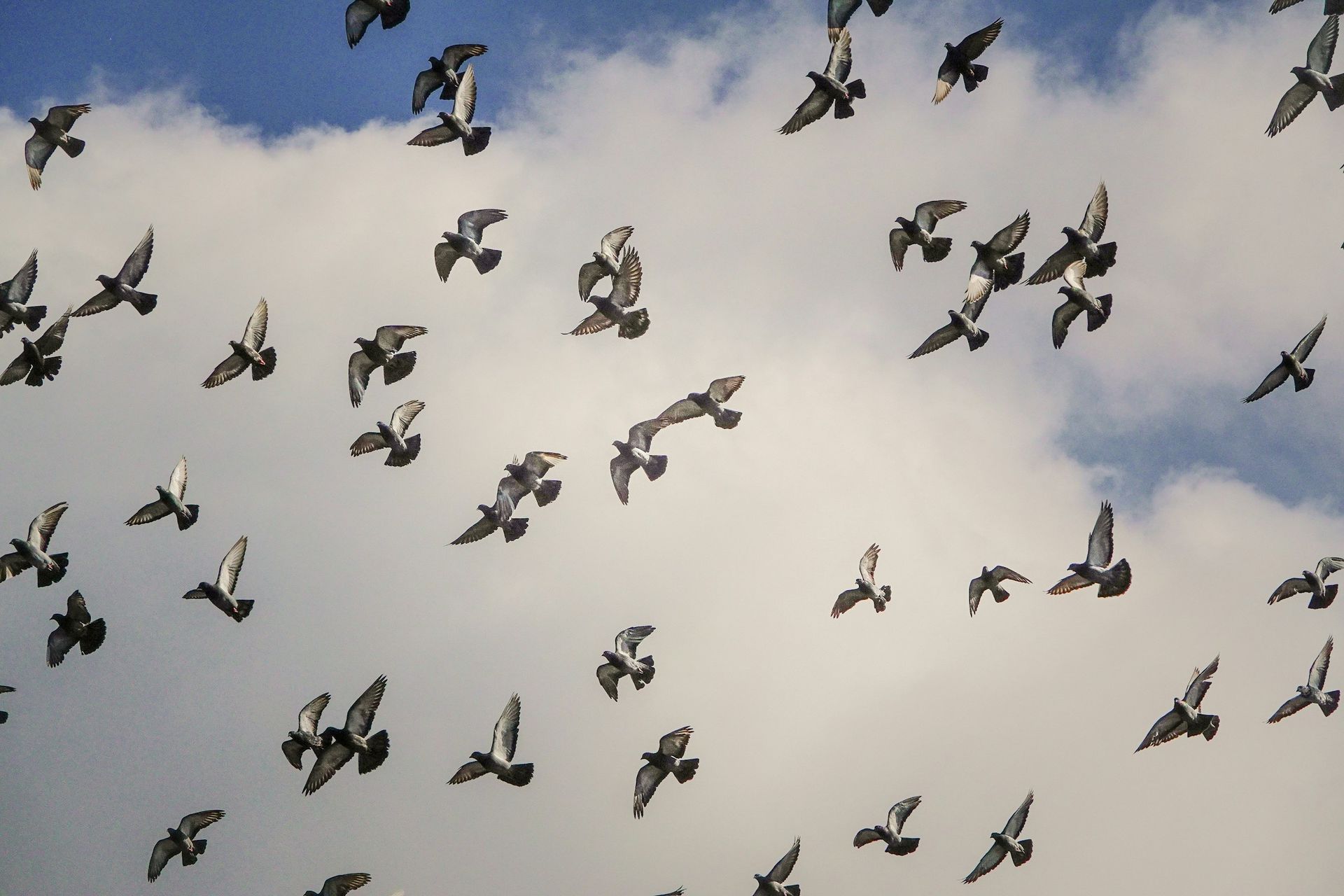Pigeons, also known as rock doves, are one of the most widespread and recognizable birds in the world. Found in urban areas, farmlands, and coastal regions, pigeons are highly adaptable and have lived alongside humans for thousands of years. They play an essential role in urban ecosystems by scavenging waste and dispersing seeds.
Most pigeons measure around 12-14 inches in length with a wingspan of 20-26 inches. Their plumage varies from iridescent gray to shades of brown and white, often displaying a shimmering green and purple sheen on their necks. Pigeons are highly social and live in flocks, feeding on seeds, grains, fruits, and discarded human food.
During the breeding season, pigeons build simple nests on ledges, rooftops, and bridges, laying 1-2 eggs per clutch. Both parents share incubation duties and care for the young, which fledge within 4-6 weeks. Unlike many other birds, pigeons can breed year-round in suitable climates.
Natural predators include hawks, falcons, and domestic cats. Human-related threats such as window collisions, entanglement, and urban pest control efforts also affect pigeon populations. Despite these risks, pigeons remain highly successful in urban environments.

For your safety and the well-being of wildlife, please observe animals from a distance and avoid touching or disturbing them. If you encounter an animal that appears injured or in distress, contact a licensed wildlife rescue organization for guidance before intervening.
Found An Animal? Not sure how to help a wild animal in need? Learn when to step in, who to call, and how to help safely.
Did You Know?
- Pigeons have been used as message carriers for centuries, with some even awarded medals for their service in wartime.
- They are one of the few bird species capable of recognizing their reflection in a mirror.
- Pigeons can fly at speeds of up to 60 miles per hour and travel over 500 miles in a single day.
- Their navigation skills are so precise that they can find their way home from hundreds of miles away.
- Pigeon droppings were once considered valuable fertilizer due to their high nitrogen content.
- They can distinguish between different human faces and remember individuals who feed them.
- Pigeons have excellent hearing and can detect low-frequency sounds that humans cannot.
- The iridescent feathers on their necks change color depending on the angle of the light.
- Baby pigeons, called squabs, remain in the nest longer than most other birds and are rarely seen until they are nearly full-grown.
- The Band-Tailed Pigeon is native to California.
Problems Faced In The Wild
- Habitat Loss: Urban development reduces suitable nesting and roosting sites.
- Window Collisions: Reflective glass poses a significant danger to flying pigeons.
- Entanglement: Discarded fishing lines, netting, and other debris can trap pigeons.
- Human Persecution: Pigeons are often targeted in urban pest control efforts.
- Predation: Hawks, falcons, and domestic cats are significant predators.
- Pollution: Contaminated food sources and water can affect pigeon health.
Tips For Cohabitation
- Secure Food Waste: Properly dispose of food scraps to avoid attracting large flocks.
- Install Bird-Friendly Window Features: Reduce collisions by making glass more visible to birds.
- Provide Fresh Water Sources: Maintain clean water for pigeons and other urban wildlife.
- Avoid Using Harmful Deterrents: Opt for humane pigeon control methods.
- Educate Others: Share the ecological role of pigeons in urban environments.
- Support Bird-Friendly Urban Design: Advocate for green spaces that provide habitat for urban wildlife.



